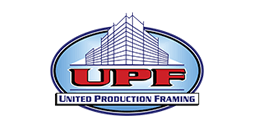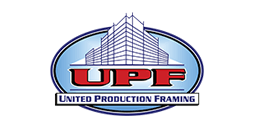Information
-
Harness and Lanyard Examination Reference
-
Document No.
-
Department / Site
-
Conducted on
-
Prepared by
-
Location
-
Personnel Involved
Harness
HARNESS IDENTIFICATION
-
PW ID Number
-
Harness Manufacturer
-
Harness Model
-
Harness Serial Number
-
Date of Manufacture
-
In-Service Date
-
Out of Service Date
-
Comments
-
Equipment identification and labels
-
Traceability of the product is a legal requirement. All relevant information MUST be present and legible. Inspect to be certain that all harnesses have a label that is legible and securely held in place.
HARDWARE
-
D-rings - Check for rust or corrosion, distortion, cracks, breaks, and rough or sharp edges. D-rings should pivot freely.
-
Checked for Abrasions
-
Checked for Corrosion
-
Checked for Cracks
-
Checked for Damage
-
Checked for Distortion
-
Checked for Sharp Edges
-
Buckles & Web ties - Note any unusual wear, damage or distortion. On tongue buckles check that the roller and tongue move freely and that the tongue overlaps the buckle frame. Check the outer and centre bars on friction and mating buckles for distortion. On quick release types check for broken plastic and that they will not release when one release is opened. Mating buckles should nest together.
-
Checked for Abrasions
-
Checked for Corrosion
-
Checked for Cracks
-
Checked for Damage
-
Checked for Distortion
-
Checked for Sharp Edges
-
Checked for Function
-
Comments
-
Hardware
WEBBING & STITCHING
-
Webbing - Inspect the entire length of all the webbing looking for frayed edges, broken fibres, pulled stitches, cuts, burns and chemical damage. Also look for mildew, discoloration, hard shiny spots, any webbing that has been marked with a felt pen, excessive hardness or brittleness or the Harness Fall Indicator deployment.
-
Checked for Abrasions
-
Checked for Burns
-
Checked for Chemical Damage
-
Checked for Cuts
-
Checked for Discolouration
-
Checked for Excessive hardness or brittleness
-
Checked for Excessive Soiling
-
Checked the Harness Fall Indicator
-
Checked for Frays
-
Checked for Tears
-
Checked for Pen Markings
-
Comments
-
Stitching - Check all stitching for ripped or pulled stitches and to make sure the webbing joints are not loose. Also look for missing stitching, hard or shiny spots, or discoloration of stitching.
-
Checked for Cut Stitches
-
Pulled Stitches
-
Comments
-
Webbing & Stitching
OVERALL DISPOSITION
-
Harness safe to use
-
Harness Destroyed? Take photo evidence
-
Signature of person carrying out the examination
Lanyard
LANYARD IDENTIFICATION
-
Traceability of the product is a legal requirement. All relevant information MUST be present and legible. Inspect to be certain that all Lanyards have a label that is legible and securely held in place.
-
PW ID Number
-
Lanyard Manufacturer
-
Lanyard Model
-
Lanyard Serial Number
-
Date of Manufacture
-
In-Service Date
-
Out of Service Date
-
Comments
-
Lanyard Identification
HARDWARE
-
D-rings - Check for rust or corrosion, distortion, cracks, breaks, and rough or sharp edges. D-rings should pivot freely.
-
Checked for Abrasions
-
Checked for Corrosion
-
Checked for Cracks
-
Checked for Damage
-
Checked for Distortion
-
Checked for Sharp Edges
-
Buckles and Karabiners, etc. - Note any unusual wear, damage or distortion. On tongue buckles check that the roller and tongue move freely and that the tongue overlaps the buckle frame. Check the outer and centre bars on friction and mating buckles for distortion. On quick release types check for broken plastic and that they will not release when one release is opened. Mating buckles should nest together.
-
Checked for Abrasions
-
Checked for Corrosion
-
Checked for Cracks
-
Checked for Damage
-
Checked for Distortion
-
Checked for Sharp Edges
-
Checked for functionality
-
Comments
-
Condition of Hardware
WEBBING & STITCHING
-
Webbing - Inspect the entire length of all the webbing looking for frayed edges, broken fibres, pulled stitches, cuts, burns and chemical damage. Also look for mildew, discoloration, hard shiny spots, any webbing that has been marked with a felt pen, excessive hardness or brittleness or the Harness Fall Indicator deployment.
-
Checked for Abrasions
-
Checked for Burns
-
Checked for Chemical Damage
-
Checked for Cuts
-
Checked for Discolouration
-
Checked for Excessive hardness or brittleness
-
Checked for Excessive Soiling
-
Checked the Lanyard Fall Indicator
-
Checked for Frays
-
Checked for Tears
-
Checked for Pen Markings
-
Checked Shock Absorber (if a fall arrest)
-
Confirmed the unit has not been deployed
-
Comments
-
Stitching - Check all stitching for ripped or pulled stitches and to make sure the webbing joints are not loose. Also look for missing stitching, hard or shiny spots, or discoloration of stitching.
-
Checked for Cut Stitches
-
Pulled Stitches
-
Comments
-
Webbing & Stitching
OVERALL DISPOSITION
-
Lanyard safe to use?
-
Lanyard Destroyed? Take photo evidence
-
Signature of person carrying out the examination












